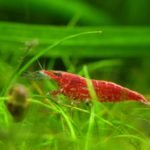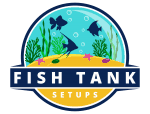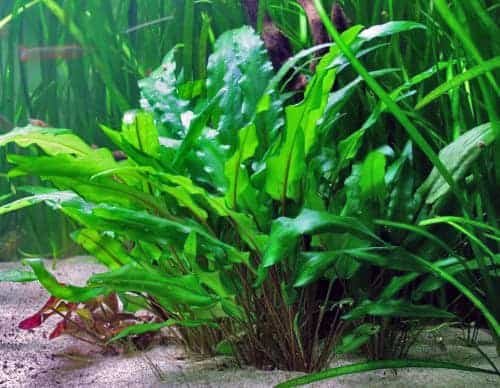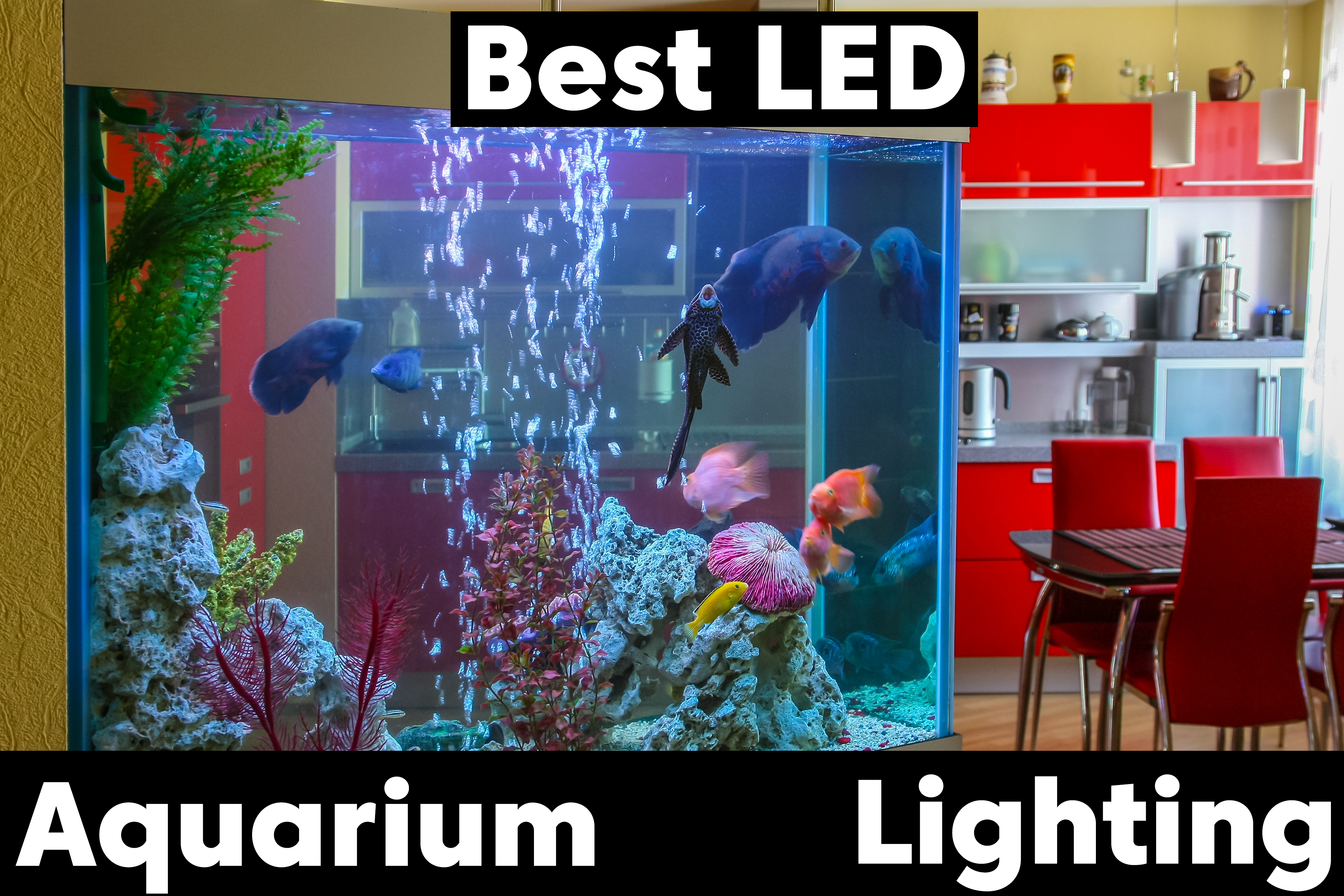Aquariums and fishkeeping are like underwater gardening, especially when you’re dealing with planted tanks. For aquatic plants, one of the biggest things to think about is the substrate you use. Picking out the best substrate for planted tanks makes a huge difference and may have a large impact on the outcome of your tank, either positively or negatively. There are some safer, more neutral options that work decently well in most planted tanks. But, if you want the best results, you’ll have to learn which substrate will make it happen and why.
It’s not as easy as just throwing some gravel and plants into the water and hoping for the best! You have to pay attention to a lot more than you might initially think if you want your aquarium to thrive.
If you’re new to aquarium keeping, it’s time to learn about one of the central features of the tank: substrate! Even if this isn’t your first time and you’ve got some experience in raising aquatic plants or fish, you could still benefit from a refresher and a reminder of what’s out there to choose from. You never know what you might learn or how it might help you get even better at your craft.
What is aquarium substrate?
A substrate is a fancy term that refers to what you line the bottom of your tank with. This could be anything from sand to pebbles. There is no particular material that the substrate has to be made from, and there’s no specific shape or size it has to have. Because aquariums are controlled environments that don’t have the same types of biological and physical life as a wild environment, most substrate falls into a few categories around tank management.
Bags of substrate give you a lot of different information. Here are the highlights of what you really need to pay attention to if you want to get the right kind for your planted tank:
Types of Planted Tank Substrates
| Type | Benefits | Drawbacks | Best For |
|---|---|---|---|
| Aquasoil | Nutrient-rich, supports strong growth, buffers pH | Can leech ammonia at first, pricier | Beginners & serious aquascapers |
| Eco-Complete / Mineral mixes | Packed with minerals, easy to use, no rinsing | Lightweight, roots may take time to anchor | Low-maintenance planted tanks |
| Gravel & Sand (inert) | Affordable, easy to clean, good for aesthetics | Provides no nutrients, may compact | Fish-focused tanks, decorative setups |
| Topsoil (capped with gravel) | Very cheap, nutrient-rich | Can cloud water, compacts easily | DIY hobbyists on a budget |
| Clay (Fluorite, Laterite) | Long-lasting, releases nutrients slowly | Can be sharp, not as attractive | Root-heavy plants as underlayers |
What to Look for on the Bag
Nutrient content. Does it contain nutrients or is it purely structural
Grain size and shape. Fine rounded grains anchor stems and carpets. Coarse or sharp grains can damage soft roots or fins.
Buffering. Look for pH or KH effects if you keep shrimp or soft-water plants.
Longevity. Some aquasoils soften over time. Clay gravels last essentially forever.
Prep and maintenance. Rinsing requirements, tendency to cloud, and how it behaves during siphoning.
Active vs Inert Substrate
Depending on what your substrate is made from, it can impact your water quality in one way or another. You need to consider this to set up a stable, positive environment for the life in your tank. Depending on what your aquasoil is composed of, it may alter your water chemistry. Make sure your aquasoil selection fits your fish and plants’ needs.
Active substrate alters water chemistry.
Inert substrate won’t alter water chemistry.
Complete Versus Compound
You’ll see these terms thrown around a lot with aquarium substrate. There’s a significant difference in setting up a tank with one or the other. The complete substrate is ready to use right out of the bag. You can pour it right into the tank and don’t have to use it with anything else. Any type of substrate can be complete. What this means is that it’s ready to go right away for planting and use.
The compound substrate needs a little extra work to do what’s called “capping”. The compound substrate can cloud your water if it’s used by itself and comes directly into contact with the whole aquarium above. Instead, you need to cover it with a few millimeters of lime and gravel to help prevent it from clouding the tank water. It’s used as an under-layer to line the tank and give nutrients to plants.
Effect on Aquarium Life
Beyond the water quality, substrate can affect the plant and marine life in your aquarium directly. The best substrate for planted tanks will work as an anchor for plants rather than letting them move around freely, and it won’t injure or disturb marine life as they go about their business. The sharp or jagged substrate may cut your fish fins and plant leaves, the tiny substrate could be accidentally ingested and injure your fish, the large substrate may be hard on plant roots, etc. Pay attention to what your substrate may do, so you can make a choice you’re prepared to work with.
What’s are the Best Substrates for Planted Tanks?
1. Seachem Fluorite
Depending on what you want, you have a few different options with this substrate from Seachem. The bag is 7kgs (15.4 pounds) and comes in black, dark, red, and regular. You can mix and match or choose the best color to suit your aquascape. The fluorite stones contained in the mix are a good fit for aquatic plants in your tank because they’re lightweight yet firm enough to help anchor the plants in place while you’re arranging the tank.
Stable Porous Natural Planted Aquarium Substrate 15.4 lbs
These clay gravel stones are porous to encourage water filtration as the tank naturally circulates. Stones are not rounded like aquasoil, so you’ll end up with a lot of different unique shapes in the mix. Pieces vary in size, though they won’t be consistently small or too large that they look awkward. It’s recommended that this fluorite substrate is used alone, though you can mix it with some other types of a substrate as well if you prefer.
Seachem gives their fluorite a natural black color that’s not the result of any chemical treatments or coating. Nothing contained within the substrate or on top of it should have a negative effect on your water quality and plant life. This substrate is not designed to alter the pH level of the tank and will not give off acid or ammonia when it’s in use. You can add this to established tanks or use it to set up a new planted tank.
Best Use:
Low to medium tech tanks that rely on water column dosing and root tabs. Great for aquarists who want a forever substrate that never needs replacing.
Pros:
- Doesn’t break down or wear out over time, and never needs to be replaced
- Works well as a gravel base and a solitary substrate for any tank
- The black coloring adds a striking look to your aquarium
- Plants easily anchor and grow in this substrate
Cons:
- Edges of each stone are sharp, not rounded, and may damage soft roots
- Requires a lot of washing/curing before use to keep tank water clear
2. Landen Aquarium Soil
Landen Aquarium Soil is a well-regarded option among planted tank hobbyists who want a balance of performance and value. Unlike some premium brands, Landen offers a substrate that is nutrient-rich, all-natural, and designed specifically for freshwater aquascapes and shrimp tanks. It is an active substrate, meaning it gently lowers pH and softens water to create conditions that most aquatic plants and shrimp prefer.
10lbs bag. Made for Natural Planted Aquarium, Plant or Shrimp Stratum, Clay Gravel and Stable Porous Substrate for Freshwater Aquarium, Black Color
Aesthetically, Landen Aquarium Soil has a dark, natural appearance that enhances plant colors and creates a professional aquascape look. It’s sold in multiple bag sizes, typically in 5-liter and 10-liter options, making it easy to scale for both nano tanks and larger aquariums. The grains are uniform and porous, which makes planting easier while also improving water circulation within the substrate.
Made from natural soil materials, this substrate contains nutrients that support root growth from the start, helping plants establish themselves quickly. Because it’s porous, it also provides surface area for beneficial bacteria, which aids in biological filtration. Like most active soils, it may initially cloud the water when disturbed, but this usually clears once the filter settles the tank.
Best Use:
Landen Aquarium Soil is best for planted tanks and shrimp setups that need a nutrient-rich substrate with gentle pH buffering.
Pros:
- Rich in nutrients to promote plant growth
- Porous structure that supports both roots and beneficial bacteria
- Dark, natural look that complements aquascapes
- Helps buffer pH to the range most shrimp and plants prefer
- Available in multiple bag sizes for tanks of different scales
Cons:
- As an active soil, it can temporarily alter pH and hardness
- Initial water clouding may occur if not filled carefully
- Nutrient content diminishes over time and may need supplementation
3. Fluval Plant & Shrimp Stratum
To accommodate your specific aquarium, you can get this substrate in 4.4, 8.8, or 17.6-pound bags. The compound substrate in this bag is appropriate for planted tanks and certain types of marine life, especially shrimps and similar critters. You’ll be able to help your variety of plants grow well with the nutritious combination of ingredients mixed into this soil. Before using this substrate, you’ll want to wash it to reduce water clouding and keep unwanted water quality fluctuations at a minimum as you get the tank used to the new materials.
17.6 lbs. Aquarium Substrate for Strong Plant Growth, Supports Neutral to Slightly Acidic pH
Made from rich volcanic soil, Fluval’s plant and shrimp stratum is a good medium for plants with soft, spreading roots. The soil grains are small and light, allowing plant roots to easily penetrate the surface of the substrate to anchor the plant into the ground. Porous holes in the grains help to filter tank water for clearness while also harboring beneficial bacteria in the tank. In addition to the sheltering effect of the grains themselves, this substrate is mixed with beneficial micronutrients from Fluval that help promote a healthier tank environment.
For most aquatic plants, lower pH is preferable, which is why this substrate can lower the pH of your water slightly to make it more neutral. This also creates a better environment for shrimp fry as well, if they’re included in your aquarium. Aquatic plants are the main focus of Fluval’s substrate. Its dark, natural coloring looks great in most aquariums with other natural and organic-looking décor.
Best Use:
Shrimp-forward planted tanks and nano aquascapes where pH buffering and fry-safe interstitial spaces matter.
Pros:
- It may help to reduce water discoloration from other organic sources in the tank
- Great for mixing with other substrates in a planted tank
- The dark coloring looks great with bright aquatic plants
- Works well for small tanks
Cons:
- Too lightweight, a syphon suction cleaner may unintentionally remove the substrate
- Handling the substrate can make your water messy as it breaks down over time
4. CaribSea Eco-Complete
Sold in 20-pound bags, this is a complete aquasoil that’s formulated to promote healthy plant growth and roots. CaribSea’s substrate is specifically designed for planted tanks. It has the right mix of nutrients to nourish most aquatic plants and encourage strong root growth. You can add this as a solitary substrate or mix it with other types of substrate to create the visual effect you like best in your aquarium. Check out the CaribSea Eco-Complete here!
20-Pound Planted Aquarium, Black
Basaltic volcanic soil is the main component of this aquasoil. It’s got a porous composition that helps it to act as a natural water filter in your aquarium without hindering water circulation. The porous holes work to accelerate the process of converting fish waste to usable nutrients. Volcanic soil is also well known for being rich in nutrients like iron, calcium, magnesium, potassium, and sulfur. This complete aquasoil mix has an additional 25 trace nutrients and minerals that will all boost plant health. Because it’s a complete aquasoil, it already contains much of the beneficial bacteria your tank will need to fight off algae growth on the substrate.
No washing, cleansing, or prepping of any kind is necessary for you to start using this substrate mix in your aquarium. It comes ready for use right out of the bag with no chemical additives, dyes, colorants, paint, or otherwise. This blend is black in color with a natural appearance that works well as an under-layer or a dark top layer of aquarium substrate.
Best Use:
Beginner friendly planted tanks that value easy setup with stable water chemistry.
Pros:
- Can be added to an existing tank or used for newly planted tanks
- Helps to cycle a new tank quickly
- Great for heavily planted tanks
- Substrate doesn’t need to be rinsed or washed for use, shortening prep time
- Absorbs nutrients from the water for plants to use
Cons:
- Lightweight, may not anchor new plants easily in a light coating
- Smaller grains in the mix are sucked up by python water cleaners
- Sold out quite often

Frequently Asked Questions
How deep should the substrate be in a planted aquarium?
The ideal depth depends on the plants you plan to keep. Shallow-rooted species, such as carpeting plants and small stems, can do well in about 2 inches of substrate. Larger species with extensive root systems, like Amazon swords or crypts, will need at least 3 inches to spread out and anchor properly. A deeper bed not only supports plant roots but also creates a more stable biological zone for beneficial bacteria. Many aquarists slope the substrate, starting at around 2 inches in the front for aesthetics and reaching 3–4 inches in the back where tall plants are placed. This approach both improves plant health and enhances the look of the aquascape.
Can I use topsoil in a planted tank?
Yes, organic topsoil can be used successfully, especially in “dirted tanks,” but it requires extra care. Topsoil particles are very fine and can cloud the water if left exposed, so it’s almost always capped with 1–2 inches of gravel or sand. The cap locks nutrients in place and prevents soil from floating into the water column. Keep in mind that topsoil may affect pH and hardness, sometimes in unpredictable ways, depending on the composition. If your plants or livestock are sensitive to water chemistry changes, monitor closely in the first few weeks. Done correctly, topsoil can be one of the most cost-effective ways to create a nutrient-rich substrate.
How many pounds of substrate should I use in my planted tank?
he amount of substrate you’ll need depends on your tank’s footprint (length × width) and the depth you want. A common rule of thumb is about 1 pound of substrate per gallon of water for a 2-inch bed, but this only works well on standard rectangular tanks. For odd-sized aquariums, like bowfronts or cubes, the gallon rule can be misleading because water volume doesn’t always match the bottom surface area.
A better method is to measure the base:
Multiply the tank’s length by its width to get the bottom area in square inches.
Multiply that number by the depth of substrate you want (in inches).
Divide by 61 to convert to liters, then check the product’s bag size in liters or pounds.
For example, if you have a 30 × 12 inch tank and want 2 inches of substrate, that’s 720 cubic inches. Divide by 61 = ~11.8 liters. If your substrate weighs about 1 kg per liter, you’d need around 12 kg (26 lbs).
This footprint method works for any tank shape, even unusual ones, and ensures you don’t end up with too much or too little.
How soon after adding new substrate can I introduce plants and fish?
Plants can usually be added right away, even with nutrient-rich or active substrates. In fact, planting heavily at the start helps absorb excess ammonia released by some soils and stabilizes the tank faster. Fish, on the other hand, should not be added immediately if you are using an active substrate like Fluval Stratum, because these soils often release ammonia in the early stages. It’s best to wait until water testing shows that ammonia and nitrite levels have dropped to zero. This typically takes 1–3 weeks depending on your setup and water change schedule. During that period, perform frequent water changes and allow the beneficial bacteria in the substrate and filter to establish.
What’s the best substrate for planted shrimp tanks?

For shrimp, stability is more important than anything else. The best substrate will help keep pH in a gentle, slightly acidic to neutral range (about 6.5–7) while also supporting plant roots. One of the most popular choices is Fluval Plant and Shrimp Stratum, which is made from volcanic soil. It buffers water parameters to a safe level for shrimp, provides micronutrients for plants, and has a fine grain size that creates hiding places for baby shrimp.
Another solid option is CaribSea Eco-Complete, which doesn’t alter water chemistry but is loaded with minerals that plants can use. Because it’s inert, you’ll need to supplement with liquid fertilizers or root tabs, but it’s very stable and works well if you’re keeping shrimp that prefer harder water.
Avoid sharp or oversized substrates, as these can injure delicate shrimp or leave too many gaps where baby shrimp are exposed. Fine-grained, rounded substrates are safer and also allow plants to anchor securely.
Final Thoughts
With so many choices available, it can be difficult to decide which substrate is best for your planted tank, especially if this is your first attempt. If you’re not sure where to start, Seachem Fluorite is one of the safest and most reliable options. It’s long-lasting, doesn’t alter water chemistry, and provides a stable base for plant roots. Because it’s an inert clay gravel, it won’t break down or need replacement, and with the addition of root tabs or water column fertilizers, it can support healthy plant growth for years.
Stable Porous Natural Planted Aquarium Substrate 15.4 lbs
Ultimately, the right choice depends on your goals, your plants, and the type of livestock you plan to keep. Every aquarium is unique, so think about the needs of your setup before making a decision. With the right substrate, you’ll be setting the foundation for a thriving aquascape that’s both beautiful and easier to maintain over time.









